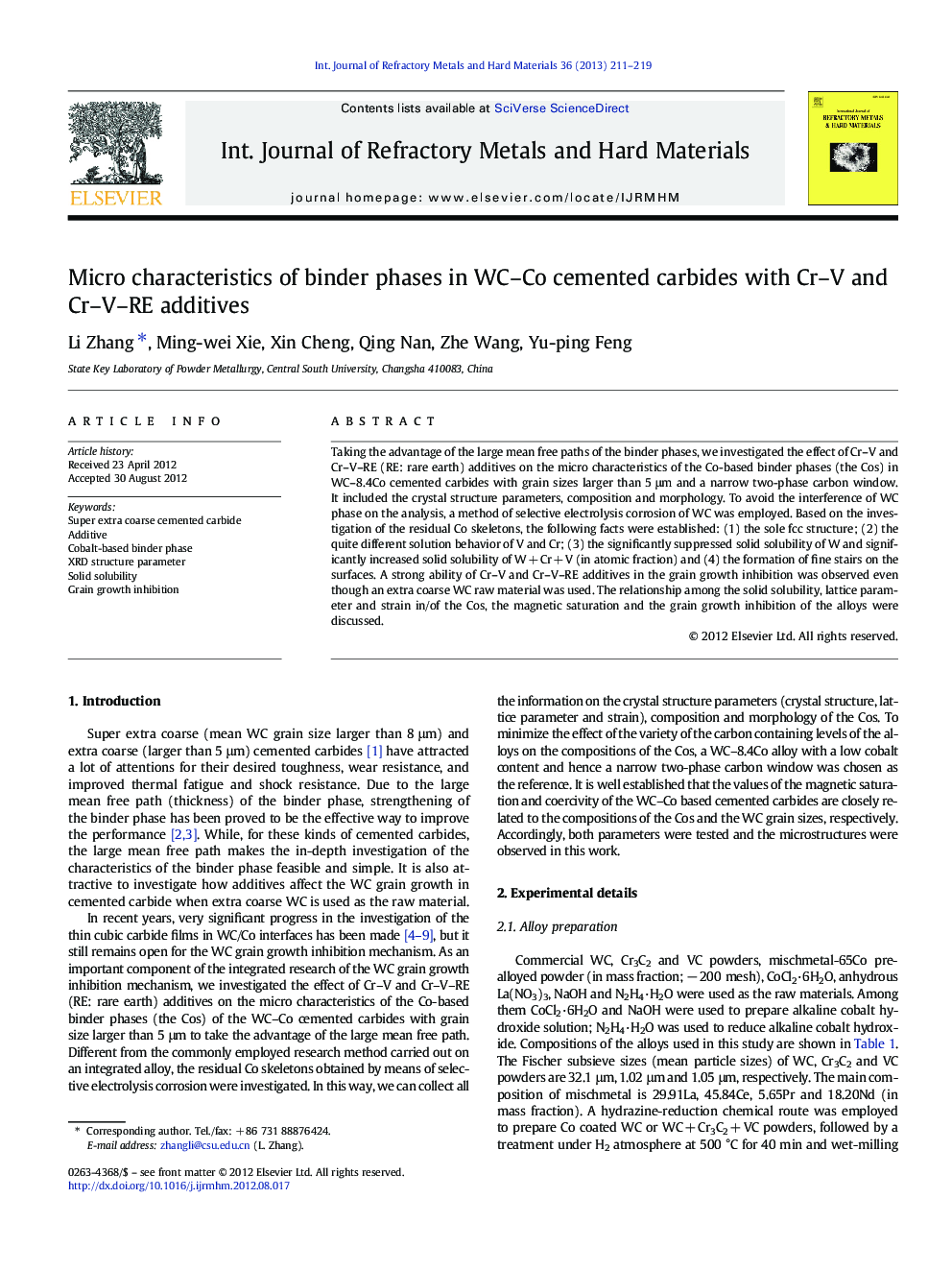| Article ID | Journal | Published Year | Pages | File Type |
|---|---|---|---|---|
| 1603661 | International Journal of Refractory Metals and Hard Materials | 2013 | 9 Pages |
Taking the advantage of the large mean free paths of the binder phases, we investigated the effect of Cr–V and Cr–V–RE (RE: rare earth) additives on the micro characteristics of the Co-based binder phases (the Cos) in WC–8.4Co cemented carbides with grain sizes larger than 5 μm and a narrow two-phase carbon window. It included the crystal structure parameters, composition and morphology. To avoid the interference of WC phase on the analysis, a method of selective electrolysis corrosion of WC was employed. Based on the investigation of the residual Co skeletons, the following facts were established: (1) the sole fcc structure; (2) the quite different solution behavior of V and Cr; (3) the significantly suppressed solid solubility of W and significantly increased solid solubility of W + Cr + V (in atomic fraction) and (4) the formation of fine stairs on the surfaces. A strong ability of Cr–V and Cr–V–RE additives in the grain growth inhibition was observed even though an extra coarse WC raw material was used. The relationship among the solid solubility, lattice parameter and strain in/of the Cos, the magnetic saturation and the grain growth inhibition of the alloys were discussed.
Graphical abstractFigure optionsDownload full-size imageDownload as PowerPoint slideHighlights► Less than 40 wt.% of V, larger than 95 wt.% of Cr are dissolved in binder phase (BP). ► Cr–V suppress solid solubility (SS) of W and raise SS of W + Cr + V in BP. ► RE facilitates retaining of W in BP and grain growth inhibition of Cr–V. ► Larger SS of W + Cr + V in BP corresponds to a better grain growth inhibition effect. ► Cr–V result in formation of fine stairs on surfaces of BP.
